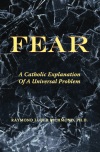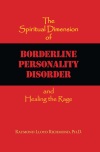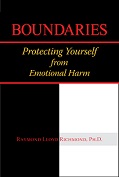|
|
|
I will
lie down in peace, and sleep comes at once
for you alone, Lord, make me dwell in safety. |
 |
—Psalm
4 : : 9 9 |
Catholic Psychotherapy |
Spiritual Counsels |
Books |
About CSF
General Introduction /
Introduction to Autogenics /
About the Training Time /
Suggestions for Practice
The Breathing Warm-up
Phase 1: Heaviness
Phase 2: Warmth
Phase 3: A Calm Heart
Phase 4: Breathing
Phase 5: Stomach
Phase 6: Cool Forehead
Completion
Summary /
Changing Unwanted Behavior
 LTHOUGH
the most simple
way to develop personal confidence and a constant awareness of the presence of God is
to pray the Jesus Prayer constantly, most Catholics need
more specific and direct training in how to develop a deep prayerful confidence and
trust in God. LTHOUGH
the most simple
way to develop personal confidence and a constant awareness of the presence of God is
to pray the Jesus Prayer constantly, most Catholics need
more specific and direct training in how to develop a deep prayerful confidence and
trust in God.
Through autogenics training you can learn
a profound sense of bodily awareness that facilitates mental peace and allows you
to quell any anxiety that could interfere with clear thinking and self-composure. The
process is purely physiological, and yet it has psychological and spiritual benefits
as well, such that, when practiced in a specifically Catholic manner, the process can
help to increase your awareness of and trust in God.
I learned autogenics years ago; it helped
to get me through several master’s degrees, my Ph.D. degree and training, my
psychologist licensing exam, and my private pilot training (as well as aerobatics practice).
When I converted to the Catholic faith, Catholic prayer replaced my autogenics practice,
but I attribute the depth of my prayer now to my previous autogenics training. Hence
anyone who is Catholic can learn autogenics as a way to develop the self-awareness and
psychological peace of mind that is necessary as a prelude to put complete trust in
God through contemplative prayer.
Introduction to
Autogenics
The word autogenics is composed of
auto- (from the Greek autos, self) and -genous (a suffix meaning
produced by, and reflecting the word genesis, creation); the word was
chosen by Johannes Schultz,[1,2] a
German doctor, to describe his original discovery first published in 1932. Today,
autogenics training [3]
teaches you to self-produce a feeling of warmth
and heaviness throughout your body, thereby experiencing a profound state
of physical relaxation, bodily health, and mental peace.
Once you become proficient at it, you can
use autogenics to overcome addictions (such as smoking),
change unwanted behaviors (such as overeating or
masturbation), resolve phobias (such as fear of flying),
and mitigate symptoms of physical ailments (such as high blood pressure,
bruxism, or chronic
pain) [4] and psychological
disorders (such as ADD and ADHD). If you tend to be a nervous or
anxious person, autogenics can help you find an inner place of calmness and emotional peace.
If you are a highly sensitive person, with autogenics you can learn to cope with environmental
stimulation by dismissing it from your attention rather than feel overwhelmed by it. In fact,
you can use autogenics to help overcome just about any psychological or physiological problem;
the results will vary according to the severity of the problem and according to your own
discipline and perseverance.
About the Training
Time
This training sequence takes about
three months
of twice-daily 15 minute sessions.
Keep in mind that
this is not a training that can be rushed. So, please remember that even if you
“complete” any phase (or part of a phase) according to the specified
repetitions, if you don’t actually feel the results of what you are saying,
then take the time to repeat the phase (or the item of the phase). Maybe it will
take you four months instead of three. So what? The idea is not to “finish”
the training but to learn the material. If you compare the initial
“extra” work to the ultimate benefits over a lifetime, the burden
will seem light indeed.
|
Some people ask
about audio recordings for this training. But recordings only miss the point.
Autogenics is not passive
hypnosis that
works through your unconscious mind; it requires much conscious effort to learn
how to communicate with your own body. You cannot do that by listening to someone
telling you how to do it. |
|
Suggestions for
Practice
Here are some suggestions for
practice:
•
|
Practice in a
quiet place, alone. If you prefer, you may use soft environmental
sounds or classical instrumental music of a largo (very slow) tempo.
Avoid all other music because your physiological responses will be unconsciously
influenced by the melody and rhythm of the music. |
• |
Keep your eyes closed
while practicing. Although you will need to open your eyes to read the
instructions, just close your eyes again while you practice. |
•
|
Although it can
help the initial training to lie flat on your back on a carpeted
floor, so as to enhance your ability to feel the heaviness of your arms
and legs, you may sit in a reclining chair if you prefer.
|
After you have
mastered the complete training sequence, you can use your autogenic routine
under any other circumstances you like, whether lying down, sitting, standing,
or walking. |
|
|
•
|
Avoid eating,
smoking, or drinking before practice. It’s
best to practice before meals rather than after, because the digestive processes
interferes with the relaxation process.
Never practice after using any
intoxicants. |
• |
If you fall asleep
during a session, repeat that routine in your next session. |
•
|
You may practice
in bed at night, but plan on falling asleep before you complete your cycle.
Therefore, consider a practice session at night, in bed, to be in
addition to your basic practice. |
•
|
When you finish
a session, relax with your eyes closed for a few seconds, and then get up
slowly. (Orthostatic hypotension—a sudden drop in blood pressure
due to standing up quickly—can cause you to faint.) Before you get up,
you might want to count backwards from 5 to 1, timed to slow, deep breathing,
and then say, “Eyes open. Supremely calm. Fully alert.” |
•
|
During the training, you will be
focusing intently on your inner experiences, to the exclusion of external
events. Therefore, it is possible that you might encounter some kinds of
hypnagogic (i.e.,
dream-like) depersonalization
experiences in which bodily perceptions seem distorted. In general, just
ignore these things and they will pass. If you find them exceptionally
troubling, then you might want to consult with a psychologist to try to understand
the particular meaning of these symptoms for you. |
The Breathing
Warm-up
Use this Warm-up
before every autogenics practice session, even after you have become proficient at
the more advanced exercises.
Begin a process
of deep breathing, exhaling to a mental count that is twice as long
as you inhale. With each breath cycle, increase the duration. For instance,
inhale counting, “One,” exhale counting, “One,
Two.” Inhale counting, “One, Two;” exhale counting,
“One, Two, Three, Four.” Go up the scale to six counts in,
twelve counts out. Then reverse: six counts in, twelve counts out;
five counts in, ten counts out; and so on, down to one count in,
two counts out.
Phase 1:
Heaviness
After the
Breathing Warm-up, begin this Phase 1 practice with your right arm.
(But if you are left-handed, begin, in this as in all other exercises, on
your left side.)
|
What does it mean
that your arm or leg is limp and heavy? Well, most of the time your arms and legs
are supported by muscle strength, and so you won’t notice their weight, but if you
deliberately relax your muscles in an arm or leg it will drop of its own natural
weight. Thus a limp arm or leg is an arm or leg not supported by muscle
strength, and a heavy arm or leg is an arm or leg resting as natural weight
when it is limp. To demonstrate this, lie on the floor with your arms at your side;
then bend one arm at the elbow to raise your hand above the floor; and then relax the
muscles in your arm so that it will drop to the floor as natural weight. That, then,
is an arm that is “limp and heavy.” |
|
So, breathe slowly and deeply, and silently
repeat the following Heaviness formula—the first half of
each phrase (the part before the “ / ”) while you are inhaling, the second half (the part
after the “ / ”) while you are exhaling:
My right arm
is getting / limp and heavy |
8 times |
My right arm
is getting / heavier and heavier |
8 times |
My right arm
/ is completely heavy |
8 times |
I feel / supremely
calm |
3 times |
Glory to God /
in the highest |
3 times |
Jesus /
I trust in You |
3 times |
Lord Jesus Christ,
Son of God / have mercy on me |
3 times |
Practice this
routine two or three times a day, for three days. After that, continue
with the same basic routine structure but with the following
substitutions:
• My left arm is getting
/ limp and heavy, etc. — 3 days
• Both my arms are getting
/ limp and heavy, etc. — 3 days
• My right leg is getting
/ limp and heavy, etc. — 3 days
• My left leg is getting
/ limp and heavy, etc. — 3 days
• Both my legs are getting
/ limp and heavy, etc. — 3 days
• My arms and legs are
getting / limp and heavy, etc. — 3 days
The Phase
1 routine takes 21 days of practice.
At the end of the 21 days, your last
cycle of this routine will temporarily be known as your final
Heaviness Formula:
My arms and legs
are getting / limp and heavy |
8 times |
My arms and legs
are getting / heavier and heavier |
8 times |
My arms and legs
are / completely heavy |
8 times |
I feel / supremely
calm |
3 times |
Glory to God / in
the highest |
3 times |
Jesus /
I trust in You |
3 times |
Lord Jesus Christ,
Son of God / have mercy on me |
3 times |
Phase 2: Warmth
After you have completed the 21 days of
Phase 1, you may move on to Phase 2.
Begin with the
Warm-up breathing exercise. Do the final Heaviness Formula
with all the repetitions. (Heaviness—and the muscular relaxation it
represents—is critical to the rest of the training. So you need to master
it well right from the start.) At the end of the Heaviness Formula
add this exercise for warmth:
My right arm
is getting / limp and warm |
8 times |
My right arm
is getting / warmer and warmer |
8 times |
My right arm
/ is completely warm |
8 times |
I feel / supremely
calm |
3 times |
Glory to God / in
the highest |
3 times |
Jesus /
I trust in You |
3 times |
Lord Jesus Christ,
Son of God / have mercy on me |
3 times |
Practice this
routine (the Heaviness Formula combined with the warmth exercises)
two or three times a day, for three days. After that, continue with
the same routine structure but with the following substitutions (remembering
to do the Warm-up breathing exercise and the Heaviness Formula
at the beginning of each practice session):
• My left arm is getting
/ limp and warm, etc. — 3 days
• Both my arms are getting
/ limp and warm, etc. — 3 days
• My right leg is getting
/ limp and warm, etc. — 3 days
• My left leg is getting
/ limp and warm, etc. — 3 days
• Both my legs are getting
/ limp and warm, etc. — 3 days
• My arms and legs are
getting / limp and warm, etc. — 3 days
The Phase
2 routine takes 21 days of practice.
At the end of the 21 days, you may
use a final Heavy/Warm Formula to
sum up the first two Phase 2 exercises:
My arms and legs
are getting / limp and heavy and warm |
8 times |
My arms and legs
are getting / heavier and warmer |
8 times |
My arms and legs
are / completely heavy and warm |
8 times |
I feel / supremely
calm |
3 times |
Glory to God / in
the highest |
3 times |
Jesus /
I trust in You |
3 times |
Lord Jesus Christ,
Son of God / have mercy on me |
3 times |
Practice this
Heavy/Warm Formula (beginning with the Warm-up breathing exercise)
two or three times a day for one week.
Phase 3: A Calm
Heart
After you have completed the 21 days of
Phase 2, you may move on to Phase 3.
Do the Warm-up. Then begin the
following routine which incorporates your previous work (the Heavy/Warm Formula)
and adds the calm heart exercise:
My arms and legs
are getting / limp and heavy and warm |
3 times |
My arms and legs
are getting / heavier and warmer |
3 times |
My arms and legs
are / completely heavy and warm |
3 times |
I feel / supremely
calm |
3 times |
My chest feels
/ warm and pleasant * |
8 times |
My heartbeat
is / calm and steady |
8 times |
I feel / supremely
calm |
8 times |
Glory to God / in
the highest |
3 times |
Jesus /
I trust in You |
3 times |
Lord Jesus Christ,
Son of God / have mercy on me |
3 times |
* This phrase helps to achieve a
calm heart response, but it will be dropped after Phase 3.
Practice this
routine two or three times a day for two weeks.
Phase 4: Breathing
After you have completed the two weeks of
Phase 3, you may move on to Phase 4.
Do the Warm-up. Then begin the
following routine which incorporates all your previous work and adds command of your
breathing as well:
My arms and legs
are getting / limp and heavy and warm |
3 times |
My arms and legs
are getting / heavier and warmer |
3 times |
My arms and legs
are / completely heavy and warm |
3 times |
My heartbeat
is / calm and steady |
3 times |
I feel / supremely
calm |
3 times |
My breathing
is / supremely calm |
8 times |
I feel / supremely
calm |
3 times |
Glory to God / in
the highest |
3 times |
Jesus /
I trust in You |
3 times |
Lord Jesus Christ,
Son of God / have mercy on me |
3 times |
Practice this
routine two or three times a day for two weeks.
By this time you will probably have
begun to notice some pleasant and surprising effects from your practice. But continue
on to further refine your sense of bodily command.
Phase 5: Stomach
After you have completed the two weeks of
Phase 4, you may move on to Phase 5.
Do the Warm-up. Then begin the
following routine which helps you add a radiant feeling of central warmth and peace
to your body:
My arms and legs
are getting / limp and heavy and warm |
3 times |
My arms and legs
are getting / heavier and warmer |
3 times |
My arms and legs
are / completely heavy and warm |
3 times |
My heartbeat
is / calm and steady |
3 times |
I feel / supremely
calm |
3 times |
My breathing
is / supremely calm |
3 times |
I feel / supremely
calm |
3 times |
My stomach is
getting / soft and warm |
8 times |
I feel / supremely
calm |
3 times |
Glory to God / in
the highest |
3 times |
Jesus /
I trust in You |
3 times |
Lord Jesus Christ,
Son of God / have mercy on me |
3 times |
Practice this
routine two or three times a day for two weeks.
Phase 6: Cool
Forehead
After you have completed the two weeks of
Phase 5, you may move on to Phase 6.
Do the Warm-up. Then begin the
following routine which helps you add a calm, stabilizing sensation of coolness to
your forehead:
My arms and legs
are getting / limp and heavy and warm |
3 times |
My arms and legs
are getting / heavier and warmer |
3 times |
My arms and legs
are / completely heavy and warm |
3 times |
My heartbeat
is / calm and steady |
3 times |
I feel / supremely
calm |
3 times |
My breathing
is / supremely calm |
3 times |
I feel / supremely
calm |
3 times |
My stomach is
getting / soft and warm |
3 times |
I feel / supremely
calm |
3 times |
My forehead is
/ cool |
8 times |
I feel / supremely
calm |
3 times |
Glory to God / in
the highest |
3 times |
Jesus /
I trust in You |
3 times |
Lord Jesus Christ,
Son of God / have mercy on me |
3 times |
Practice this
routine two or three times a day for two weeks.
Completion
After you have completed the two weeks of
Phase 6, you should have mastered all the six phases of the basic training. Your
final condensed autogenics formula will now be as
follows:
Warm-up
(as in previous sessions) |
|
My arms and legs
are / heavy and warm |
3 times |
My heartbeat
and breathing are / calm and steady |
3 times |
My stomach is
/ soft and warm |
3 times |
My forehead is
/ cool |
3 times |
I feel / supremely
calm |
3 times |
Lord Jesus Christ,
Son of God / have mercy on me |
3 times |
Summary
To maintain your proficiency, practice
the final condensed autogenics formula at least
once a day. If you maintain your practice faithfully, you will find that by using
only one or two cycles of the final routine you can achieve a pleasant and calm
mental state under almost any circumstances.
But make no mistake:
It takes long, hard practice to master the exercises, and they take you only
as far as your desire will allow.
May you go
far.
And, if you do
go far, please send a donation to this website
to express your gratitude for what you have received here.
Changing Unwanted
Behavior
In general, changing unwanted behavior
involves three basic
steps:
1. |
To know how ugly
the behavior is and how much damage it causes to yourself and to
others. |
2. |
To know the damage
caused by the behavior. |
3. |
To know the benefits
of new and different behavior. |
It isn’t
sufficient, however, that you “know” these things intellectually;
it is important to know them by feeling them in the depths of your
heart.
Autogenics can
be helpful in changing unwanted behavior because you can use your autogenics
skills to work through each of the three basic steps of change by actually
feeling the elements of each step with the help of autogenic visualization
and suggestion.
Be advised though that some
long-standing personality problems have roots deep in
unconscious
conflicts, so you may need professional psychotherapy
rather than autogenics. Still, even in these cases, the autogenics approach
can be worth a try.
So here’s
how to do it.
First,
enter a state of relaxation by practicing your condensed autogenics
formula. This is important because the next
two steps (if done properly) will arouse considerable anxiety, and you need
to be able to reduce that anxiety again with your autogenics
skills.
Second,
create a negative mood state in which you visualize the harmful and disgusting
effects of the unwanted behavior. For example,
if you bite your fingernails, see the ugly, raw nails; notice how uncomfortable
and embarrassed you feel; see your fingers getting scarred and deformed.
If you smoke cigarettes, smell the stench of the smoke on your clothes and
body; see the stains on your fingers and teeth; notice your shortness of
breath and coughing; visualize the poisons coating your lungs and other internal
organs. After the intense negativity of this mood has been felt fully, reduce
the anxiety with relaxation.
Third,
contemplate how miserable and wretched your life will be if you do not change
your behavior. For example, if you bite
your fingernails, see yourself socially inhibited, fearful, and lonely, hiding
your hands from view everywhere you go. If you smoke cigarettes, see yourself
wheezing for breath and dying of cancer. Imagine your children suffering
from their own addictions because of your negative influence. After the intense
negativity of this mood has been felt fully, reduce the anxiety with
relaxation.
Fourth,
create a positive mood state in which you visualize the beneficial effects
of new, healthy behavior, all the while your anxiety from the previous step
begins to dissolve. For example, if you
now bite your fingernails, see yourself as you could be with beautiful nails,
moving your hands gracefully and without embarrassment. If you now smoke
cigarettes, see yourself as you could be, calm and confident, relaxed and
able to concentrate, free of frustration and tension, a positive influence
on others.
Fifth,
reinforce your positive mood with positive statements of
validation. Repeat them several times. Create
your own, or select from the following examples.
|
Be careful, though,
not to tell yourself lies. If you try to claim that you have the most brilliant
mind imaginable, that you will trample all competition underfoot, or that
you will become the greatest such-and-such the world has ever seen, then
such grandiosity will lead you right into self-destruction and everlasting
doom. But if you complete the autogenics training successfully, all
the statements below are honest and humble reflections of the discipline,
patience, and respect for your body that the training requires.
|
• |
When I call upon Christ’s mercy,
I am restrained from every evil impulse. |
• |
When I maintain constant emotional
awareness and keep guard over my thoughts, words, and actions, I will be
serving God, myself, and my neighbor. |
• |
My confidence is strong and steady.
With trust in God I can deal with everything as it happens. I have no need
for [tobacco, coffee, alcohol, drugs, etc]. Substances no longer control
me. |
• |
My [fingernails, hair, thumb] are[/is]
an important part of my body, so I will care for them[/it] with kindness.
I have no need to harm them[/it] or [bite, twist, pull, suck, etc.]
them[/it]. |
• |
I have no need to rush or be concerned
about my speech. I can talk slowly and clearly. Just as I can take one calm
breath after another, I can speak calmly, one articulate syllable at a time.
I have no need to stutter. |
• |
I can work calmly and confidently.
My mind will not wander. My self-confidence will not be bothered by small
mistakes. I can meet all obstacles with confidence. |
• |
I approach all tasks with a calm
focus on the matter at hand. I do not lose my concentration by distractions.
I act with discipline and resolve when I trust in God. |
• |
I listen to and respect my own body.
I can present myself to others with modesty, respect, and dignity. I will listen
to and respect others. |
• |
With trust in God, I can remain calm,
relaxed, and composed in any situation. |
• |
With divine grace I can dissolve tension
and anxiety before it builds. |
• |
All cravings will pass within 10
minutes. I have the patience to trust in God to remain calm and to
wait. |
• |
My calmness and patience can result
in compassion and understanding. I can get along well with anyone. I will
return kindness to any insult. |
• |
My experience of peace and calm is
not threatened by anything outside myself. I have no need for rivals; I renounce
jealousy. I wish good to all persons. |
• |
There are no “good” days
or “bad” days. I can do what needs to be done at all times. I uphold
my promises and value my word. In God, an unlimited source of inspiration
is available to help me. |
Sixth,
conclude with a simple closure to the relaxation session. Take a
few deep breaths and affirm that “I feel supremely calm. Lord Jesus Christ,
Son of God, have mercy on me.”

Notes.
1.
Schultz, J. H., & Luthe, W. (1959). Autogenic training: A
psychophysiologic approach in psychotherapy. New York: Grune and
Stratton.
2. Schultz, J. H.,
& Luthe, W. (1969). Autogenic therapy: Vol. 1. Autogenic methods. New
York: Grune and Stratton.
3. The autogenics
exercises presented here have been adapted from Ostrander, S., & Schroeder,
L. (1979). Superlearning. New York: Dell Publishing Co.
4. Relaxation practice
can help to alleviate a person’s anxiety about the developing symptoms
of any disease, and that’s good because if a person stays calm, then
anxiety won’t fan the flames of the symptoms. This doesn’t mean
that relaxation practice can “cure” a disease, but relaxation can
delay the progress of a disease and minimize the symptoms. Nevertheless,
it’s always possible that a person of strong belief can use autogenic
suggestions to so minimize the negative effects of the symptoms that the
person does not become incapacitated to such an extent as other persons without
such relaxation practice. Therefore, it’s well worth the try—and
not just for the specific symptoms of a disease, but especially because
Autogenics practice could promote a generally enhanced quality of life. All
that matters is that you believe in the depths of your heart that there will
be benefits.


Healing
|
Though
Demons
Gloat
|
Anger
&
Forgiveness
|
Falling
Families,
Fallen Children
|
Disasters
and
trauma
|
Psychology
from the
Heart
|
 |
 |
 |
 |
 |
 |
Psychological Healing
in the Catholic Mystic tradition |
True Christian
Identity
In Confronting
Evil |
How to Turn the
Emotional Wounds
of Daily Life Into
Psychological Growth. |
The Psychological
and
Spiritual Remedy
For Our Cultural
Disintegration |
The Struggle For
Psychological
and Spiritual
Growth |
Collected Texts
About the Spiritual Depth of
Clinical Psychology |
More information |
More information |
More information |
More information |
More information |
More information |
Desire
and
Distraction
|
Fear
|
Stopping
Smoking
|
Borderline
Personality
Disorder
|
Catholic
Compassion
|
Reverence
for the
Holy Eucharist
|
 |
 |
 |
 |
 |
 |
A Catholic Perspective
On Behavioral Change
and Its Subversion |
A Catholic Explanation
Of a Universal
Problem |
Through
Faith
and
Prayer |
Healing
the
Rage |
When They Tell You
That the Moral Teachings of the
Catholic Church
Are Wrong |
Reverent and
Proper Conduct in
a Catholic Church |
More information |
More information |
More information |
More information |
More information |
More information |
|





















